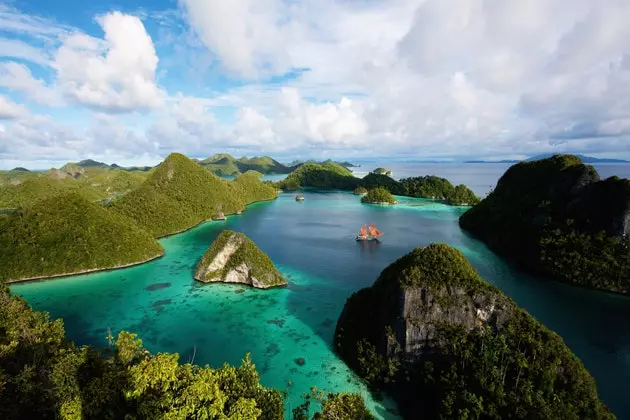
Ultramarine Blue: The Raja Ampat Archipelago in Indonesia
Calm down. This is the word sailors have used for centuries to describe the totally placid kind of sea that surrounds me right now. Flat as a mirror, the water reflects vast skies above, hides vast mysteries below.
Dawn breaks, and I am on the eastern edge of Indonesian waters, on the deck of a traditional Pinisi sailing boat called the Alila Purnama. We headed north from the port city of Sorong , off the coast of West Papua, where I have embarked. We have rocked and swayed gently on the tides, but around five in the morning we have dropped anchor. Now, while the light slightly tinges the environment, everything is calm: the sea, the ship, the sky.
We are 12 miles above the equator - which we have crossed overnight - moored in one of the many bays of the wayag island , surrounded by jagged lava peaks covered with a dense and imposing green jungle. The vision is prehistoric. Coconut palms sprout in messy rows up the sheer cliff faces. Cockatoos with brilliant white crests perch on the palm fronds as if they were sprinkled with coarse salt. Drifting swirls of mist drift into deep silent canyons. There are no houses, no other ships on the horizon, no people as far as the eye can see.
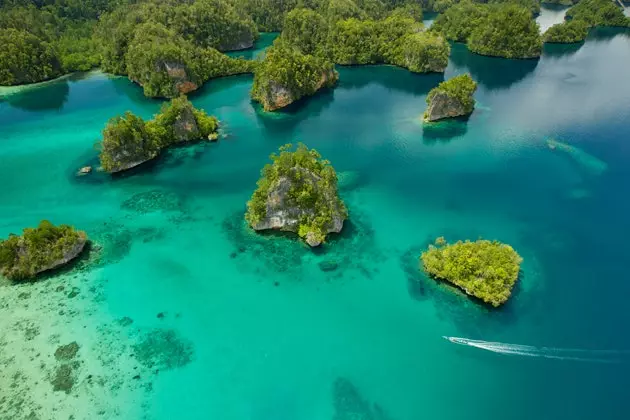
Wayag Lava Peaks Landscape
My six traveling companions and I – strangers when we boarded and today practically friends – have just woken up. It is the second day of six of an expedition by Raja Ampat, a chain of fifteen hundred and odd islands that are strung like uncut emeralds across nearly 11,000 square miles off the west coast of West Papua.
Surrounded by the Pacific and Indian Oceans, and 'anchored' by four large islands (Raja Ampat means 'four kings' in Bahasa, the country's official language), this archipelago is one of the world's most stunning, historically fascinating and biodiversity-rich places. that I have ever known. In the eighteenth century, it was one of the most important points of the lucrative spice trade control of which the Dutch and English fought.
In the middle of the nineteenth century, Alfred Russell Wallace He identified and cataloged hundreds of species of flora and fauna in his more than 70 expeditions. In 1860 this Victorian explorer decided to live alone for three months in the Waigeo forest, the northernmost of the four main islands of the archipelago , on a voluntary Robinson Crusoe retreat to observe the ostentatious and feathered bird of paradise in its natural habitat, a species that is only found in this archipelago.
More recently, Raja Ampat has become a destination for divers , nature lovers and 'fugitives' from modern life; attracted in part by the beauty of the territory, but above all for marine life, of which they claim to be the most diverse on the planet . This abundance is the happy consequence of the confluence of the oceans: thus, the deep sea currents of the Pacific provide nutrients to the bottoms of Raja Ampat, and the water heated by the sun favors the creation of a complex food chain that goes from microscopic organisms to gigantic hawksbill turtles, sperm whales and rays with fins of three meters. This without forgetting the about 1,300 species of coral reef fish of the most striking and bizarre colors you can imagine. If above the water Raja Ampat sometimes resembles the scene of Jurassic Park , below would be something like Finding Nemo.
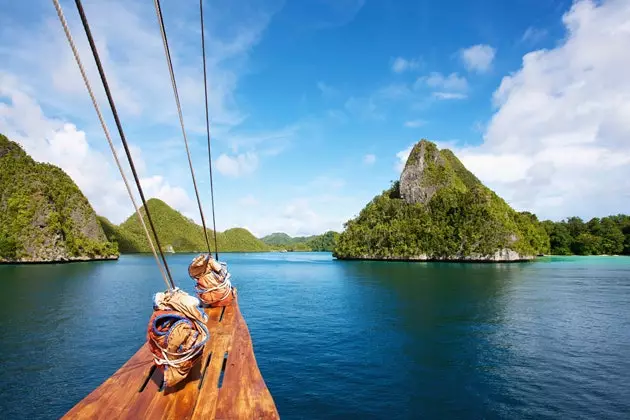
Tiger Blue boat
Despite so much wonder, Raja Ampat has remained relatively out of the loop for everyone. , even the most intrepid, as it is one of the most inaccessible places in Southeast Asia. The most direct route involves a flight from Jakarta to Sorong . And it's not like there are too many fancy hotels, in fact there are practically none.
However, it is precisely this absence of tourist development is the key to its attractiveness. All these islands - very few inhabited - offer an infinite reward in their tempting coast: with fine sandy beaches to explore , inlets perfect for kayaking, bays to swim in and black volcanic peaks to climb.
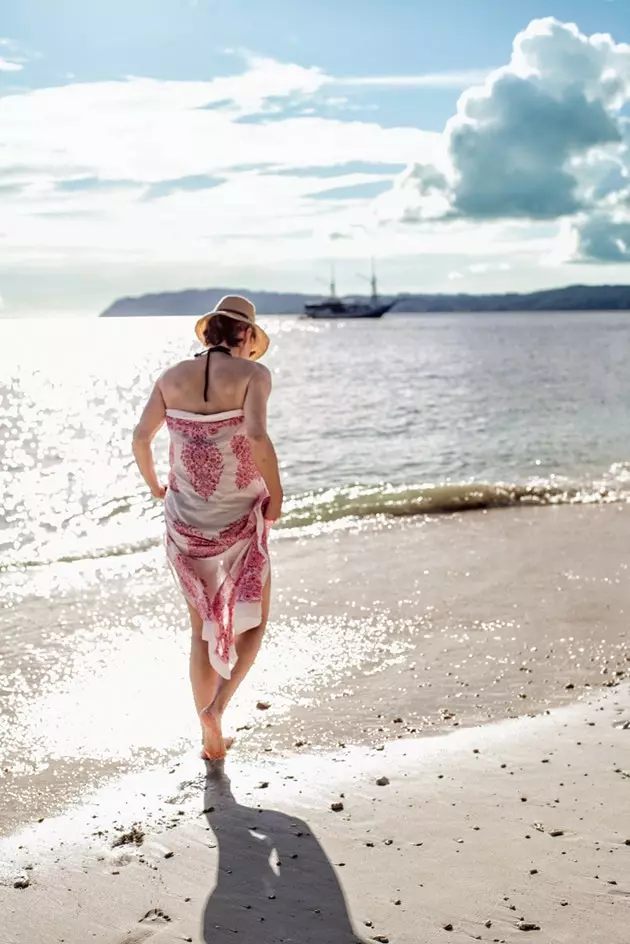
Mios Kon wild beach
Since most visitors come for only one week, two at the most, the best option to explore it all is to move by boat . Almost all of them are aimed at professional divers, where the comfort of the facilities is subject to the number of daily dives. But in recent years, more luxurious boats cater to the requests of that type of adventurer that he also wants a deep 90-minute massage at the end of the day. Same as him Alila Purnama , they have one featured cuisine, wine cellar, deck service and masseuses . They also hire the most competent captains and dive masters diving – locals or settled residents, deeply familiar with the topography of the archipelago, both above and below the surface.
The Silolona Sojourns fleet, owned by Patti Seery, an American anthropologist based in Indonesia for 25 years, was one of the first to offer such amenities. The Silolona, a five-berth pinisi opened in 2004, was joined in 2012 by the three-berth Si Datu Bua. Both are a beautiful reflection of the spirit of Seery herself, equipped with the textiles and local crafts that she has been meeting during the years in which she has lived with the Indonesian tribes.
Then there is Aman Resorts, which in 2009 took to the sea with Amanikan by Amanwana , their present canvas tent camp on Moyo Island, near Lombok . It's small, intimate, elegant and, like the rest of Aman's properties, extraordinarily expensive (a five-night cruise starts at €25,000 per couple). A more affordable ship that arrived in the same year was the Tiger Blue (owned by Malaysian and British businessmen, respectively, David Wilkinson and Nigel Foster), which may have simpler berths, but the crew is still top-notch.
The 50m long teakwood beauty I am sailing was launched in 2012 and is operated by Singapore-based Alila Hotels and Resorts. As with the Tiger Blue, there are only a few weeks of the year when solo travelers can book individual cabins – families or groups of friends rent most of the high-end pinisi boats in their entirety during the high season, which runs from November to april-. So far sailings tend to attract wealthy expats based in Asia – Australians, Europeans, Americans.
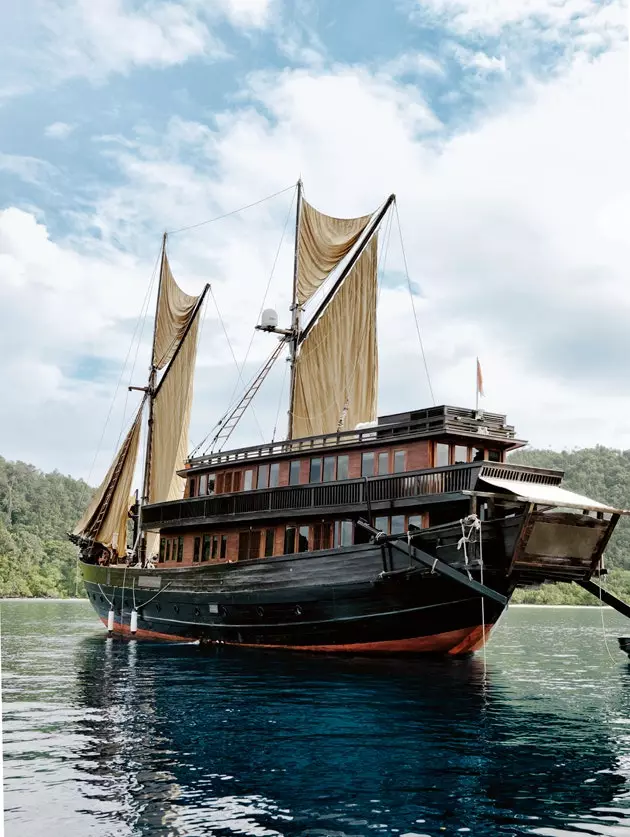
The Alila Purnama ready to sail
Like the rest of the high-level ships that sail these waters, the Alila Purnama was handcrafted in the shipyards of the south sulawesi (Sulawesi Island) by renowned master builders of the bugis tribe –legendary pirates who dominated the waters off eastern Indonesia for centuries and whose cruelty frightened the Dutch traders of the East India Company–.
On the outside, the Alila Purnama is a traditional pinisi, but the interiors were designed with rigorous attention to aesthetics and sustainability. In all five staterooms, crisp white linens drape over king-size beds, mother-of-pearl tiles line the showers, and closets are stocked with bathrobes and wicker bags perfect for visits to the beach. The master suite, on the second deck, has windows on three sides and its own private terrace. . On the main deck, a spacious lounge, also a dining room, has 24-hour service and, on the second deck, there is a small but charming library that offers a careful collection of classic literature, light books for the beach and other photographs of the region.
In an understated concession to modernity, the library also features a 42-inch flat-screen TV for watching movies in air-conditioned comfort on those hot, sticky nights.
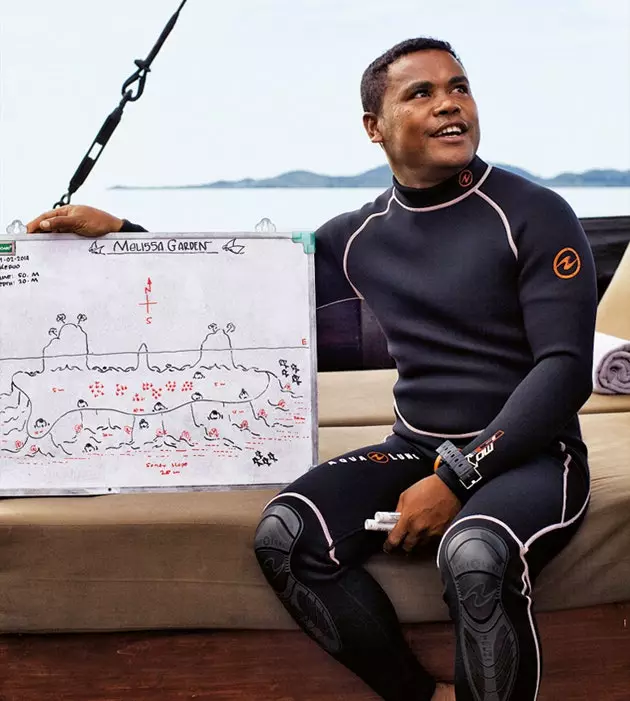
Noldi explaining the dive plan
And we had a couple of them. Raja Ampat's peak season coincides with the rainy season (in the dry season, May to September, strong winds and currents make both sailing and diving less fun). As in most tropical climates, the rainy season means an hour or two of downpours almost daily . But the equatorial sun almost always prevails, sometimes creating spectacular effects, not the least of which are strange fog banks that snake in eerie loops through the thickets of mangroves and cause night after night some of the most momentous and beautiful sunsets i have ever seen.
Scenery aside, what really sets the Alila Purnama apart is her 16-man crew. For the third morning in a row, Bagus, our gentle and sarcastic butler, suddenly appears at my side with filtered coffee and watermelon juice. He has discovered my favorite spot on the main deck, the one I go straight to as soon as I wake up ( sunrise is a time of day you don't want to miss ) . Really, very little is needed here. One night, the chef brings out trays of spring rolls; another, pizzas whose base are thin wafers, just when the passengers begin to feel a little hungry. You never have to clean your diving goggles , the wet towels on your shoulders disappear instantly and are quietly replaced by warm and dry ones, and every afternoon when you return from the excursion on the beach or from the diving session the meetings are seasoned with jokes, fresh fruit juices or infusions frost.
During breakfast – based on eggs accompanied by sambal, Balinese nasi goreng (an Indonesian version of fried rice) and the sweetest mango you can imagine – We analyze the agenda of the day. The dive master Mario, who studied architecture, makes each dive plan drawn on his whiteboard into a kind of small masterpiece in which a smiling clownfish, a jumping turtle or enormous coral gardens appear. Voyage director Annalisa, a diminutive and supremely competent torrent of Tuscan energy, charts the itinerary on the charts. At each stage of the journey, adventure is served both for those who yearn for pure and simple sybaritism and for those who don't.
On the fourth day of the voyage we dropped anchor just after the first ray of sun had touched the reef known as Manta Sandy , where the light rushes without decorum through the water and hovers over the rocks, discovering groups of angelfish eager to clean them by gently nibbling the parasites on their bottom. Arriving so early means we have the reef almost entirely to ourselves . Some of us decided to dive and others to snorkel, watching the divers from above. By the time the other ships arrive we are sunbathing on deck, drinking fresh fruit juices, ready to set sail and disappear once again.
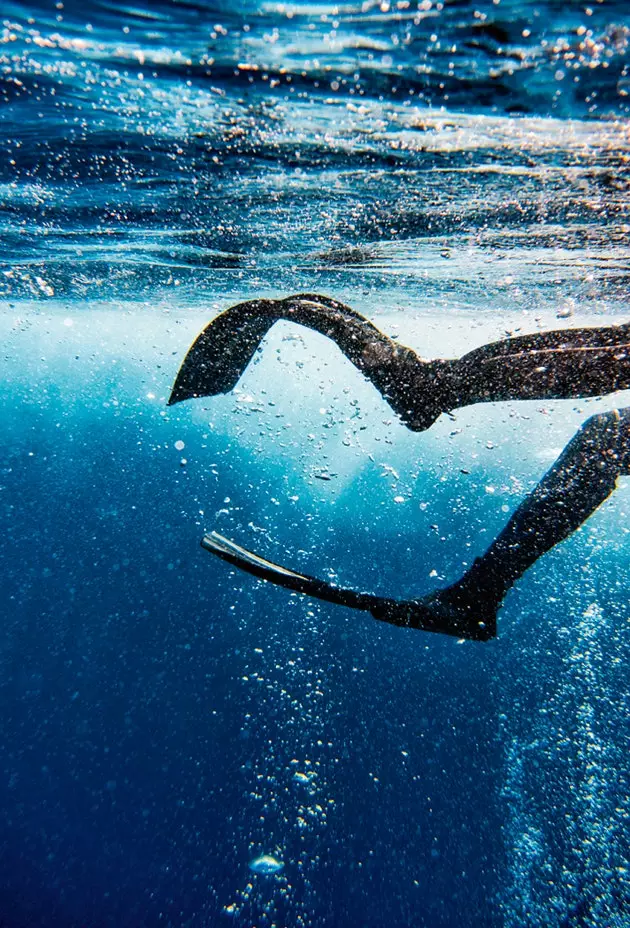
diving adventure
On a thin crescent-shaped beach of the tiny –and perfect for shipwrecking– Mios Kon Island , we lay down to watch the sunset, beer in hand, on several divans arranged in a line under a row of umbrellas – a kind of private beach club improvised during lunch hour.
On our last afternoon of navigation, we stop in the waters of the mountainous island of Gam and headed to Yenbeser , a small town located in a shallow cove surrounded by jungle cliffs. Dozens of children play fight and roll on the beach and in the water. “Good afternoon!” they shout enthusiastically in Bahasa as they walk toward the beach. Noldi, our dive guide, chats on the pier with his brother, a fisherman who has just caught a mackerel; almost a meter long, we bought it for just under a dollar to prepare the sashimi for dinner.
We had hoped to enjoy this delicacy at the communal dining table on the Alila Purnama's main deck, where we have dined every night. But the crew had other plans for us. Shortly before twilight, we accelerate back to the coast until we reach a silent cove to partially obscured sheltered by a vine-covered ledge. As we get closer, we see the faint glow of firelight: dozens of lanterns, stuck in the sand all over the beach, radiate an orange glow. A crocodile-shaped sand sculpture –that enormous species of salt water that once took refuge in the waters of Raja Ampat (but not anymore, Mario hastily points out, at least not so far north) – looks at us with flashlights for eyes.
A teak table, beautifully set with a white tablecloth and silver cutlery, sits under a Balinese silk tent hung from various tree trunks. There are fish skewers, grilled prawns, f_ilet mignon_, spiced corn on the cob, fresh salads, and sublime bebek betutu (Balinese-style roast duck), all cooked on a makeshift barbecue in a pit a few meters away. Mackerel sashimi is sweet and delicate , as only a fish caught hours before can be. We eat and drink barefoot on the sand to the sound of the waves hitting the beach just a few meters away.
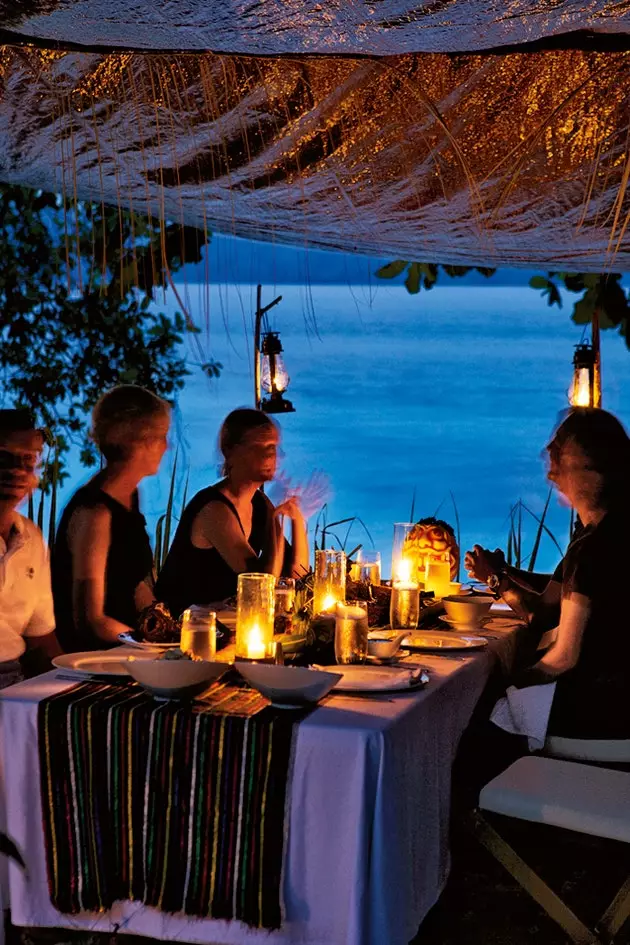
Dinner in the cove
Later, back on the Alila Purnama, we enjoy a farewell glass of wine on the bridge deck. The sea is calm once more, as during the first morning. We chatted about the incessant work in the Sulawesi Shipyards, where more and more boats are launched; of the secrets that surround these islands; of the rumors that speak of luxury hotel companies eyeing islands not far from where we are sailing. Under the absolute calm of this indigo sky and with the tranquility that prevails in the islands that surround us, talking about change seems abstract, insignificant. No matter what happens, or what changes come to these islands, they will always be magical. A piece of advice: come early, while the moments of calm are still possible. * This article is published in the Condé Nast Traveler magazine for September number 76. This issue is available in its digital version for iPad in the iTunes AppStore, and in the digital version for PC, Mac, Smartphone and iPad in the virtual newsstand by Zinio (on Smartphone devices: Android, PC/Mac, Win8, WebOS, Rim, iPad) .
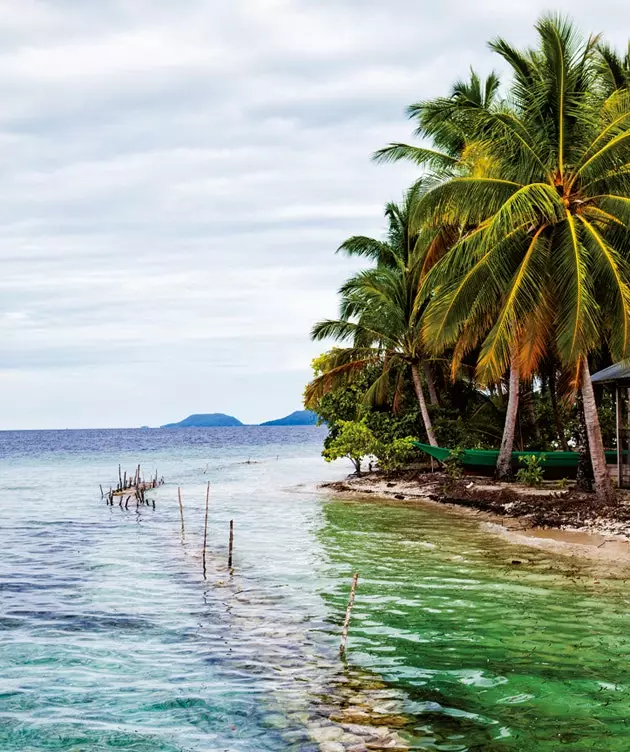
High tide in Arborek
